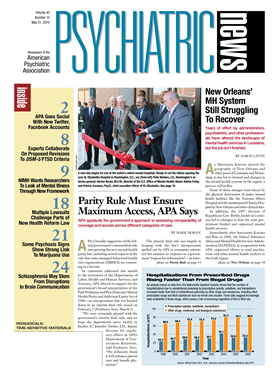Logically, the worse the stress is, the more wary of danger a person ought to become. But research has shown that the relationship is more complex than that.
Experimentally, mild stress produces greater vigilance, but still greater stress produces avoidance, according to a study by American and Israeli researchers.
That difference might affect survival and serve as an insight into the factors at work in posttraumatic stress disorder (PTSD), they said.
Experimental psychologists have been paying more attention over the last decade to attentional bias—the effect that a threatening word or face on a computer screen has on reaction time.
Attentional bias can be measured in the laboratory. The subject sees a face or a word with either threatening or neutral aspects on the screen, then is shown two dots at the same point. The dots may be displayed horizontally or vertically. The person must react to the orientation and press a button with the appropriate response. Normally, if the dots appear after a threatening face or word, the subject has a faster reaction time. Any delay represents avoidance. In theory, a bias toward threat would suggest paying closer attention to the things that could hurt you, but some research indicates that avoidance is common after a threatening cue.
“In the last eight years, there has been massive work to understand the neurological and biological basis of this process,” said Yair Bar-Haim, Ph.D., an associate professor of psychology at Tel Aviv University, speaking at the Anxiety Disorders Association of America's annual conference in Baltimore in March. A report on the research will be published in the June American Journal of Psychiatry.
Usually, studies of trauma victims ask them to recall the previous traumatic event. So Bar-Haim and colleagues from the National Institute of Mental Health sought more evidence in a very real-world setting, during the conflict in December 2009 and January 2010 between Israel and Hamas militants in Gaza. In this case, the subjects were interviewed during a week when they were under rocket attack.
Interviewers gathered data from 131 Israeli civilians living within range of rocket fire from Gaza. The respondents were grouped geographically by warning time available once an alert was sounded. In the zone nearest to Gaza, residents had just 15 seconds to seek shelter. Farther away, they had 30 to 45 seconds, while in the most distant area within range, residents had 60 seconds to find cover. A control group of people living beyond rocket range was also interviewed.
The researchers used a battery of tests to evaluate symptoms of PTSD (PTSD Checklist from the National Center for PTSD), depression (Patient Health Questionnaire-9), and state anxiety (State-Trait Anxiety Inventory). They also administered the dot-probe task on laptop computers. Most (123) of the interviews were held in the respondents' apartments.
People living within the 15-second alert zone and the 30-45 second zone indicated more PTSD and depression symptoms than did those in the 60-second and no-threat areas, said Bar-Haim.
Anxiety was high among those in the 15-second warning area, but was lower, with no significant differences, in the zones farther away.
In the attention-bias test, raw reaction times to dot-probe tasks were slower following threatening images than neutral ones among persons with the least warning time.
Reaction times of those who had less than 45 seconds to seek shelter were significantly slower than those with at least 60 seconds to find shelter and those outside of rocket range.
Furthermore, reaction times and psychopathology were linked, said Bar-Haim. Respondents exposed to life-threatening risks not only exhibited avoidance of, rather than vigilance toward, threat information, they also had more symptoms of PTSD, depression, and anxiety. The delayed reaction times confirm results of existing research suggesting psychomotor slowing in patients with PTSD or depression.
The correlation between attention-bias suppression and symptoms may also be a marker for dissociation and avoidance, said Bar-Haim.
Dissociation and avoidance only delay the response to imminent danger, placing an individual in greater peril. Also, avoidance is a symptom of PTSD, so understanding its relationship to stress may clarify both etiology and treatment.
Future research should prospectively track the associations among stress, symptoms, and attention to threat, Bar-Haim suggested.
